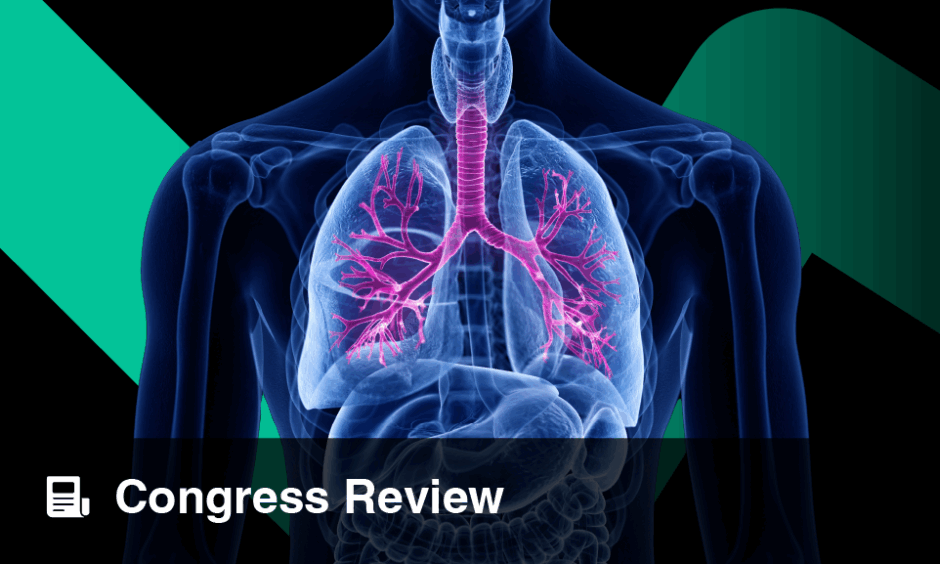First of all, what led you down the path of asthma, allergy, and clinical immunology?
I grew up in a family of allergists and immunologists. My father was an allergist and immunologist, and Past President of the American Academy of Allergy, Asthma, and Immunology (AAAAI) in 1982. So, environment was an influence, and as a both a teenager and a college student I had many laboratory and clinical experiences in allergy and immunology. As a medical resident, I enjoyed my allergy and immunology rotations, especially the clinical immunology aspects. I liked the broad spectrum of pathology we saw as clinicians, and that allergy and immunology is a Conjoint Board that allowed me to see both children and adults.
Given your extensive experience in both clinical practice and research, how has your approach to diagnosing and managing severe asthma evolved over the years?
Major advancements in diagnosis, assessment of asthma control, and treatment outcomes with patient reported outcome measures and therapeutics have made severe cases of asthma manageable. Our biggest challenge is with patient adherence to medications and office visits. Prior to advanced therapeutics beyond inhaled corticosteroids and long-acting β2-agonists, we had oral corticosteroids or off-label use of therapies such as methotrexate or oral gold, which had marginal benefits at best. A better understanding of asthma pathogenesis has allowed the development of novel therapeutics, including anti-IL-4 receptor alpha, anti-IgE, anti-IL-5/IL-5 receptor, and anti-thymic stromal lymphopoietin agents that treat different asthma phenotypes/endotypes. Currently we are working on a longer acting anti-IL5 antagonist for asthma.
Your research includes the health effects of both home and occupational environmental exposures in patients with asthma. What are some of the most significant findings you’ve encountered in this area?
Our findings confirm the importance of obtaining an indoor environmental history to assess indoor air quality; specifically allergen exposures for patients with IgE-mediated asthma, but also other irritant/chemical triggers in cleaning agents, potpourris, secondary smoke exposure, mold, or other outdoor air pollutants that become indoor pollutants when windows are left open. We have looked at many environmental interventions to mitigate these exposures with success. The workplace is an extension of the home, but often more difficult to access and implement avoidance measures. For example, we demonstrated that immunosurveillance programs implemented in industries where high or low molecular weight antigen can induce asthma, are effective at preventing exposure and the development of occupational asthma and rhinitis symptoms.1 A more recent study investigating the use of an ultraviolet irradiation air cleaning device installed in the central furnace duct of asthmatic children’s homes compared to a sham unit, found significant improvement in many asthma variables for children where the home had an active unit after one year.2
You emphasize looking at the ‘whole patient’ rather than just the primary complaint. Can you share an example where addressing co-morbid conditions significantly improved a respiratory disorder?
We see many patients presenting with asthma who also have chronic rhinitis which is untreated. However, when you address the upper respiratory tract, their asthma symptoms are overall better controlled. We showed that failure to treat chronic rhinitis in patients with asthma and COPD results in increased 30-day hospital readmission rates.3
We also see many patients presenting with mast cell activation syndrome, and many also have symptoms of dysautonomia. Treatment of these patients holistically improves their overall condition.4 Thus, it is essential to get a comprehensive history to develop a management plan that will improve the patient’s outcomes.
Hereditary angioedema (HAE) can have significant respiratory complications. How do you differentiate between hereditary and other forms of angioedema in clinical practice, and what are the latest advancements in treatment?
HAE is due to a genetic mutation resulting in a gene that doesn’t produce C1INH (85% of cases [Type 1 HAE]), or a gene that makes C1INH that doesn’t work (15% of cases; [Type 2 HAE]). The swelling episodes can involve the upper airways, tongue and lips, abdomen, genitalia, or extremities, and does not respond to H1-antihistamines or other medications used to treat histaminergic angioedema. These patients have a low C4 level, low C1INH functional level, and depending on the HAE subtype, a low C1INH for Type 1 HAE or a high or normal C1INH for Type 2 HAE. We now have on-demand treatments that can be used to treat an acute attack. These target kallikrein, the molecule important for regulating bradykinin production. For example, icatibant, which is a molecule that blocks bradykinin 2 receptors, or C1INH plasma or recombinant replacement therapy. These all work well when used early on after the onset of an attack. For patients with more frequent attacks, involving the throat or abdomen, prophylactic treatment with a long-acting kallikrein inhibitor called lanadelumab, dosed every 2 weeks subcutaneously, or intravenous/subcutaneous C1INH replacement therapy dosed every 3–4 days can be given. These are major advances compared to what we had previously, which were androgens, fresh frozen plasma, and tranexamic acid.
What role do allergic and non-allergic rhinitis play in exacerbating respiratory conditions like asthma, and how do you tailor treatments for patients dealing with both?
It is extremely important to diagnose chronic rhinitis subtypes correctly, as treatment differs. As discussed above, proper management of chronic rhinitis can significantly improve asthma control. Untreated rhinitis contributes to significant morbidity, associated with worsening asthma and recurrent sinus disease.
With your long- standing contributions to medical education, what key lessons do you emphasize to your students and fellows about diagnosing and managing complex respiratory disorders?
The most important lesson is to characterize the patient: what is the allergic status, what are their triggers (infectious, exercise, allergens, pollutants, etc.), and what is the nature of their environments at home and work or school?
Confirm a diagnosis of asthma by history and objective testing with spirometry, and if available, exhaled nitric oxide. Assess for chronic rhinitis subtypes and other comorbid conditions, such as gastroesophageal reflux disease, obstructive sleep apnea, chronic sinusitis, and vocal cord issues. Provide patients with a way to assess their asthma control with patient reported outcome measures. Be familiar with the American Thoracic Society (ATS) and Global Initiative for Asthma (GINA) guidelines. Start medications based on asthma severity per guidelines, and schedule follow-up visits to assess response to treatment and control; peak expiratory flow rate meter readings should be obtained at each visit, and spirometry should be obtained once the patient is stable, at least once per year. With the resources we have today to manage asthma, we should not be seeing asthma hospitalizations or asthma-related deaths.








